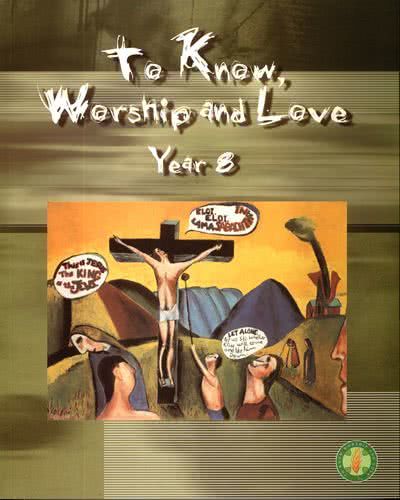To Know, Worship and Love: Year 8
9781864202458
Book
$69.99
In stock
A wealth of content is offered in Year 8. Continuing the approach he established in Year 7, Dr Richard Rymarz, in chapter 1 first presents Jesus Christ within his own Jewish culture. Then he provides a series of studies of the Church founded by Christ, underlining the Catholic principle that Jesus Christ is inseparable from the Church.
In chapter 2, People and Ministries in the Church the roles of the faithful are presented, from the Pope and Bishops to parish life. Chapters 3 to 5 offer students a history of the early Church: The First Christians, chapter, 3, The Early Church, chapter 4, including Nero's persecution. What followed is described in chapter 5, Before Constantine: Snapshot of the Third Century. The “snapshot” method gives a vivid picture of what it was like to live in the first Christian communities, for example deciding what to do with Christians who gave in under persecution. This chapter culminates in the achievement of the first Christian Emperor, Constantine.
Chapter 6, A Closer Look at St Paul: a Christian Hero, takes up the “closer look” approach from Year 7, to lead students into the Apostle's life, work and writings, above all his goal, to help us to know Jesus Christ.
Experiences of Good and Evil, chapter 7, includes “five ways of striving for goodness”. The positive cultivation of the virtues is the best approach to Christian morality and is found in the Catechism of the Catholic Church, based on the wisdom of St Thomas Aquinas. This lays foundations for later studies in ethics. Catholic Belief about Life after Death, chapter 8, is a thorough study of eschatology, developing what was covered in the primary texts in a way that is appropriate for young teenagers. Teenagers ask many questions today about life beyond this life.
Celebrating Being Catholic is a fascinating chapter, with much detail on the Eastern Churches, the other “lung” with which the Catholic Church breathes. Young people are encouraged to value their Catholic Rites, customs and cultures. East and West.
Liturgical and sacramental catechesis continues in A Closer Look at Catholic Symbols, chapter 10, which vividly presents the signs and symbols of the Faith, to lead into Chapter 11, A Closer Look at Some Sacraments. Three chapters on the Sacraments of Initiation follow: A Closer Look at Baptism, A Closer Look at Confirmation and Eucharistic Signs and Symbols, including the ritual actions at Mass.
Chapters 15, The Influence of Jesus, presents different impressions of Christ in the four Gospels. Chapter 16, The Teachings of Jesus: the Parables, revises work covered at primary levels. Church teaching on social justice is introduced in chapter 17, Living the Christian Life, to be developed later in terms of current issues. The final chapter, In the World: a Snapshot of Catholic Life around the World, expands the students' awareness of their Faith in Peru, Ukraine, Uganda and Papua New Guinea.
Three detailed “Time Lines” appear as appendices, to help students grasp the shape of biblical time and the history of the Church, in the world and in their own nation.
